U.S. Department of Transportation
Federal Highway Administration
1200 New Jersey Avenue, SE
Washington, DC 20590
202-366-4000
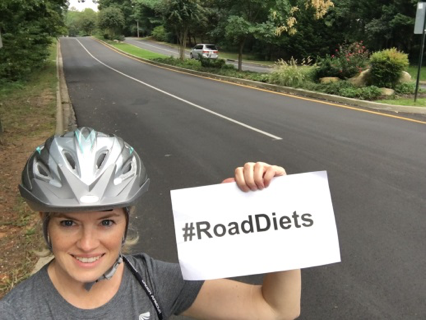
As we welcome Spring, my thoughts are on how Road Diets can make the roadway safer for pedestrians and bicyclists. Pedestrians account for approximately 16 percent of all roadway fatalities and the majority are at uncontrolled crossing locations. As part of the Every Day Counts 4 (EDC-4) program, Road Diets will be promoted through the Safe Transportation for Every Pedestrian (STEP) innovation over the next two years. FHWA will be working with states and localities to advance countermeasures, such as Road Diets, that can improve pedestrian accommodations at unsignalized crossing locations.
As for bicyclists, I encourage you to review a new document recently developed by the FHWA, Incorporating On-Road Bicycle Networks into Resurfacing Projects. This document outlines how Road Diets are a key method for providing bicycle accommodations. A bikeway can be created with a simple reconfiguration of the pavement markings. This document provides a great overview of how you can use resurfacing and Road Diets to improve safety for bicyclists.
I hope you enjoy this issue of the Road Diet Quarterly Update, where we explore the successes of Road Diet initiatives, our peer exchanges, nationwide progress toward institutionalization, and more!
Practitioners from around the country have been posting photos online using the hashtag “#RoadDiets” to show their support for this effective road safety innovation. We’ve seen tweets and photos from Maine, Arizona, Florida, Virginia, Washington, D.C., New Jersey, Missouri, Colorado, and even Ontario! Become a Road Diet champion today! Post a photo showing love for Road Diets near you.
Here’s how it works:
I look forward to seeing your post! Remember, be creative and safe when you take that selfie!
Looking for more information? Be sure to visit our website at safety.fhwa.dot.gov/road_diets to discover new materials that help inform both transportation professionals and the public about Road Diets and how they work
More than 2 years ago, New Mexico Department of Transportation (NMDOT) established an ambitious goal for themselves for the Road Diet EDC-3 initiative – go from the demonstration phase to institutionalizing Road Diets. In order to meet this goal, they set out to develop a Road Diet guide which would serve as a tool to aid transportation practitioners in their State on the use of this proven safety countermeasure.
The New Mexico EDC-3 Road Diet Committee developed an implementation plan and began researching and reviewing other States’ policies. Their first draft was complete in December 2014. The guide went through several more iterations of peer reviews to refine the information. In April 2016, NMDOT hosted a FHWA-sponsored Road Diet Peer Exchange in Albuquerque. Over 40 multidisciplinary representatives from New Mexico, California, Nebraska, Oregon, Washington, Oklahoma, and South Dakota attended the event to share their processes and experiences relating to Road Diets. The New Mexico attendees held a follow-up meeting after the peer exchange to incorporate the information learned from other States into the guide.
Once the guide was nearing completion, NMDOT partnered with FHWA once again to provide training on Road Diets, as well as introduce the draft guide to engineers and planners throughout the State. Two separate workshops were held in early October in Albuquerque and Las Cruces. Following these workshops, the Committee further enhanced the guide based on input from the training.
On December 2, 2016, the New Mexico EDC-3 Road Diet Committee officially transmitted the completed Road Diet Guide to their Chief Engineer for adoption into practice. The guide provides direction as to why NMDOT may consider a Road Diet; how to analyze whether a specific street is a good candidate for a Road Diet; best practices for Road Diet implementation, including extensive public involvement; and potential factors for project evaluation. It will be used by NMDOT and by other transportation partners assessing NMDOT‐owned or maintained facilities, including Metropolitan Planning Organizations (MPOs), Regional Transportation Planning Organizations (RTPOs), tribal governments, local governments, and the transportation planning and engineering consulting communities.
New Mexico plans to hold additional training on the guide’s use for project development, traffic, and District engineers, as well as give presentations on the guide to MPOs and RTPOs. As Road Diet projects are implemented, NMDOT plans to monitor them and complete evaluations on crash reduction, speeds, mobility, livability, and more. Using what they learn from these evaluations, they will update the guide as needed based on project experience. The guide will eventually be incorporated within the NMDOT design manual.
The NMDOT Road Diet guide is not posted online at this time, but if you would like more information, contact Elias Archuleta at elias.archuleta@state.nm.us.
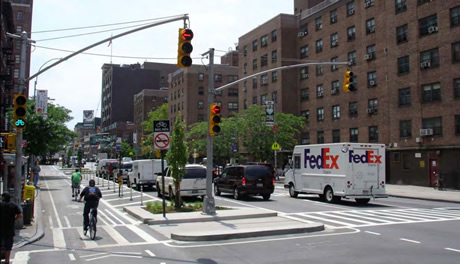
You’ve heard it from us many times before, Road Diets allow for a safer and more livable environment for all road users. But don’t just take our word for it! In New York City, researchers from Columbia University’s Mailman School of Public Health evaluated the cost-effectiveness of investments in bicycle lanes using New York City's fiscal year 2015 investment as a case study.
Road Diets and complete streets continue to prove that they are one of the best options to improve safety and livability at a low cost. The study points to some interesting facts such as, in 2005, New York City spent $10 million on curbing traffic as part of the Safe Routes to School program. The total benefit to the community from these changes were estimated to be $230 million.
While bicycle lanes reduce all forms of injury by 25 percent, the researchers discovered that the 45.5 miles of bicycle lanes the City of New York constructed in 2015–for $8 million–may increase the probability of bicycle riding by 9.32 percent.
In conclusion, the researchers found that “investments in bicycle lanes come with an exceptionally good value because they simultaneously address multiple public health problems. Investments in bike lanes are more cost-effective than the majority of preventive approaches used today.”
The facts are coming together with more and more states institutionalizing Road Diets. It’s becoming clear that these roadway reconfigurations are the complete streets solution to increasing safety and livability at a low cost.
Materials from this post were collected from “The cost-effectiveness of bike lanes in New York City” by Jing Gu, Babak Mohit, and Peter A. Muennig, and released on September 9, 2016. The report is available in full online at the Columbia Academic Commons library.
As part of our initiative to share industry best practices on Road Diet implementation, FHWA partnered with local departments of transportation (DOTs) to host Peer-to-Peer Exchanges. Previous events include, the Western Region Exchange in New Mexico, the Northeast Region Exchange in Massachusetts, and the Central Region Exchange in Tennessee.
Altogether, the FHWA has partnered with 24 local DOT chapters across the nation, reaching industry practitioners and the general public alike, through webinars, trainings, and peer exchanges.
Here is a highlight from our most recent visit.
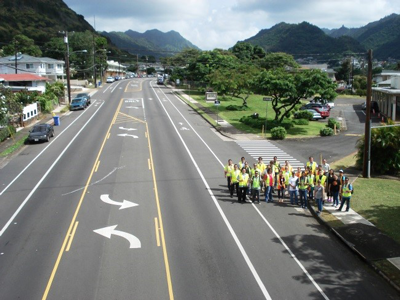
Day 2 of the Hawaii Peer Exchange.
Photo taken by Mark Doctor
Hawaii: On October 27-28, FHWA and the City of Honolulu hosted a 2-day, blended peer exchange / workshop to help Hawaii reach their Every Day Counts goal of institutionalizing Road Diets. More than 70 transportation stakeholders from Hawaii and Guam met in Honolulu to learn about Road Diet benefits, feasibility criteria, evaluation methods, multi-modal opportunities, and public outreach. On Day One, the City of Seattle, the City of Honolulu, Kaua‘i County, and FHWA and their consultant team presented on various Road Diet topics and experiences. Day Two consisted of field visits to a recently-installed Road Diet and a proposed location. For the proposed Road Diet location, attendees developed design solutions to share with the road owner. The event also allowed practitioners to build professional relationships and connections as they work towards developing, energizing, and improving their Road Diet programs.
The FHWA is offering state DOT’s FREE Road Diet-related technical assistance. This assistance includes any activities that advance Road Diets within your state. As examples, technical assistance requests may include:
For more information on the workshops, please visit: http://safety.fhwa.dot.gov/road_diets/resources.
Each quarter we will take a look at different locations across the country where Road Diet projects are being discussed and implemented.
Washington, D.C.: Five years after the District of Columbia approved funding for a pedestrian safety study, they are moving closer to making major changes to slow down traffic cutting through a historic neighborhood. One of the first projects that may serve as a model for the City is a Road Diet on Maryland Avenue, N.E.
Massachusetts: The City of Cambridge, Mass., implemented a Road Diet along Broadway, between First and Ames streets in Cambridge Kendall Square, in order improve multi-modal transportation (i.e., pedestrians, bicyclists, and buses) comfort, accessibility, and usage.
South Dakota: The City of Sioux Falls, S.D., completed a $1 million-plus Main Avenue Road Diet streetscape reconstruction project.
Iowa: The City of Newton, Ia., approved a Road Diet on First Avenue East that could lead to the four-lane road decreasing to two lanes with a center turn-lane and added bicycle lanes.
Check out some of our favorite social media highlights and remember: Post a selfie online! Include "#RoadDiets" in your text, then download and use the graphic below.

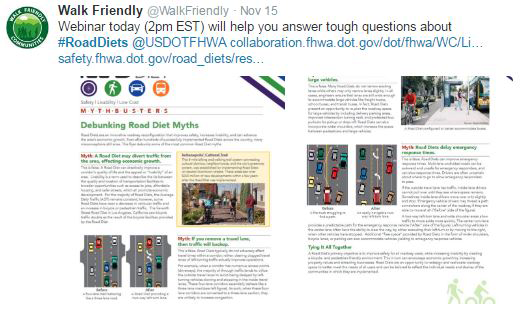

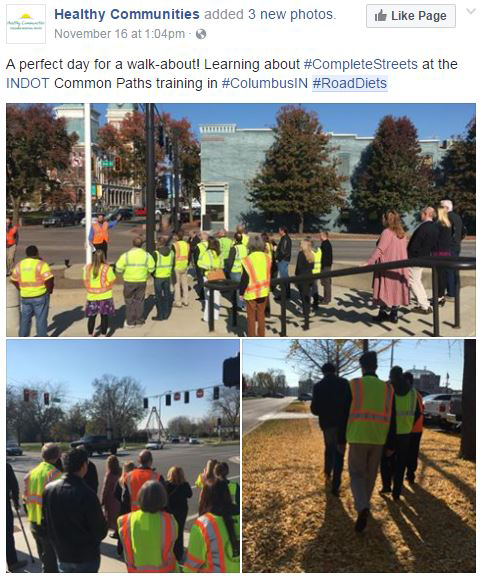
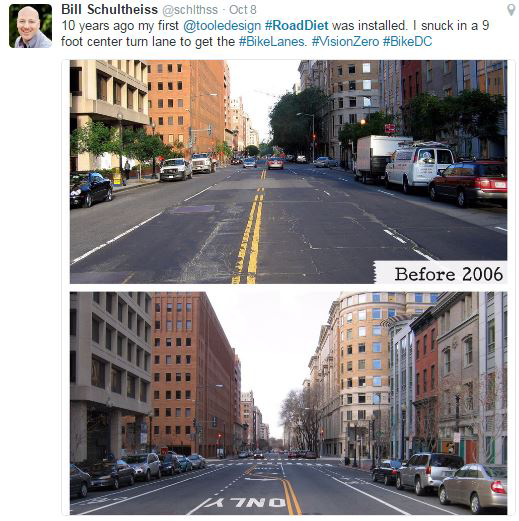
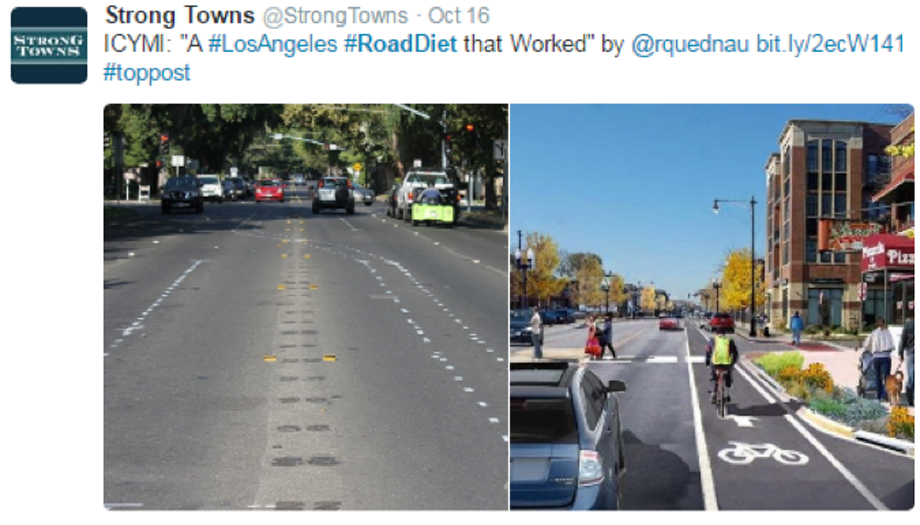
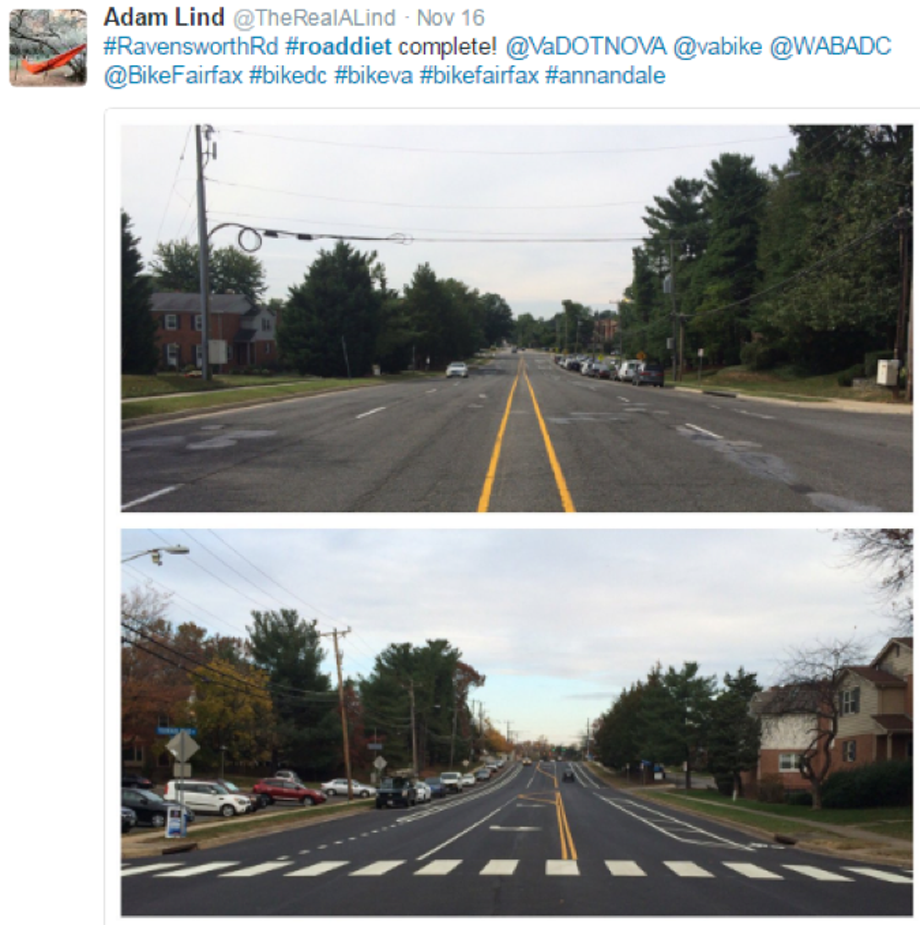
Any opinions or conclusions expressed in this newsletter in the form of tweets are those of the author(s) and do not necessarily reflect the views of the Federal Highway Administration and the Federal Highway Administration does not endorse these individuals or organizations.
is a publication of the U.S. Department of Transportation, Federal Highway Administration.
The Federal Highway Administration publishes the Road Diet Quarterly Update four times a year. We can be reached at: rebecca.crowe@dot.gov
The Road Diet Quarterly Update is available online at the FHWA Office of Safety Website safety.fhwa.dot.gov/road_diets
We welcome your comments and Road Diet safety-related articles. The purpose of this newsletter is to increase awareness and provide information and resources of Road Diets to local and state transportation authorities as well as the general public.
We encourage readers to submit articles that might be of value to the Road Diet stakeholder community. Send your comments, questions, and articles for review electronically to Becky Crowe at rebecca.crowe@dot.gov
